This post may contain affiliate links. I try to make my posts as helpful as possible and have great products easy for you to access. The use of these links provides me a small commission at no cost to you. As an Amazon Associate, I earn from qualifying purchases.
Are you thinking about doing some DIY projects around the house? Maybe you’re looking to put up some trim or crown molding or build a bookshelf. If so, you’re going to need a nailer. But which one is right for the job? Let’s take a look at two popular options: the Brad Nailer and the Finish Nailer.
This post contains everything you need to know about brad nailers vs finish nailers. Read on to know which one is right for your next DIY project?
Brad Nailer vs Finish Nailer: Which One is Right for Your Next DIY Project?
In this post you will find:
- What is a brad nailer?
- What are brad nails?
- Brad Nailer Uses
- Brad Nail Gauge Chart
- Brad Nail Sizes
- Best Cordless Brad Nailers
- What is a Finish Nailer?
- What is a Finish Nailer Used For?
- Framing Nailer vs Finish Nailer
- Best Finish Nailer
What is a Brad Nailer?
First up, we have the Brad Nailer. Brad nailers are perfect for precision work. It uses small, thin brads (hence the name) that are less likely to split the wood or leave noticeable holes. If you’re doing something like attaching thin trim or working on a delicate piece of furniture, the Brad Nailer is the way to go.
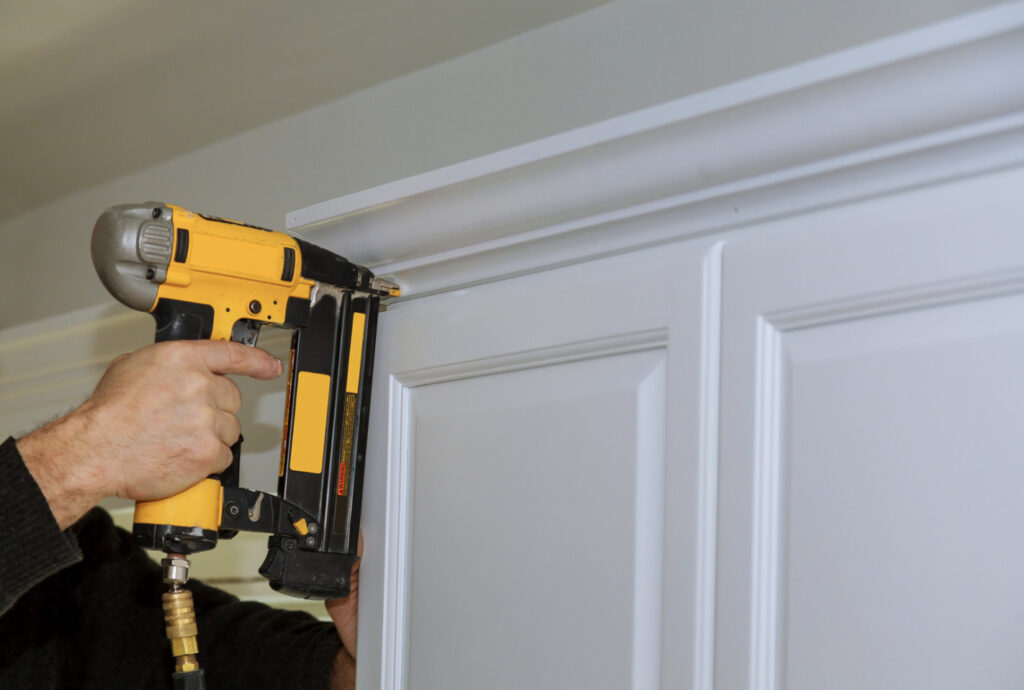
What are Brad Nails?
Brad nails are thin-gauged nails that are typically used for woodworking and carpentry. They are shorter and thinner than regular nails, making them ideal for precision work and delicate applications. Brad nails are often used to attach trim, molding, and other decorative elements to woodworking projects, as well as for furniture and cabinet making. They are less likely to split the wood or leave noticeable holes, which makes them a popular choice for finishing work.
Brad Nailer Uses
So what is a brad nailer used for? Brad nailers are ideal to be used to fasten thin and delicate materials without causing damage to the surface or splitting the wood. Some common uses of a brad nailer include:
- Installing trim and molding: Brad nails are perfect for attaching decorative trim and molding to walls, ceilings, and furniture.
- Assembling furniture: Brad nails can be used to attach joints and connect various parts of furniture like cabinets, drawers, and bookshelves.
- Attaching backings and panels: Brad nails can be used to attach backings and panels to the frame of furniture or cabinets.
- Crafting and DIY projects: Brad nails can be used in various crafting and DIY projects like picture frames, shadow boxes, and birdhouses.
- Installing baseboards and casing: Brad nailers make great baseboard nailers. They can be used to install baseboards and casing around doors and windows.
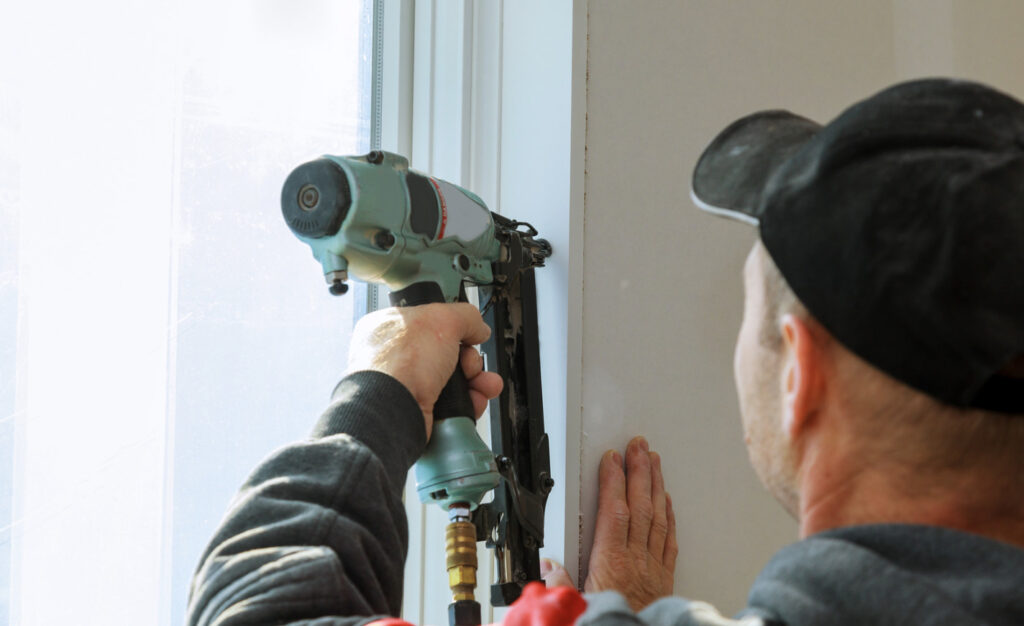
Brad Nail Gauge Chart
Brad nail gauges refer to the thickness of the nail’s shank or wire. The gauge number represents the diameter of the wire in a brad nail, with lower numbers indicating thicker wires. For example, an 18-gauge brad nail is thicker than a 23-gauge brad nail.
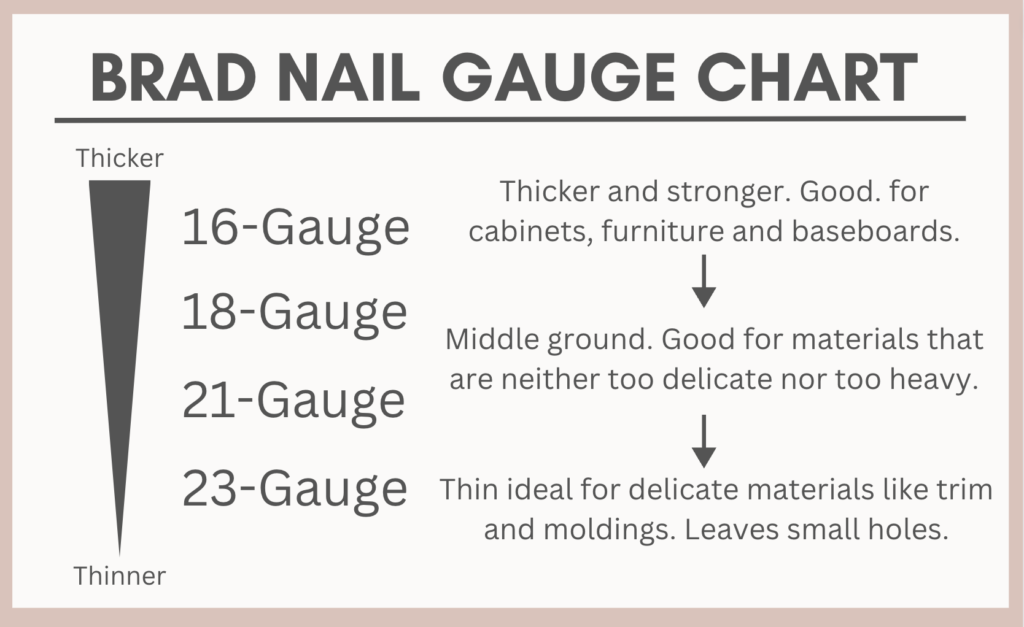
Here are some general guidelines for nail gauge sizes:
- 23-gauge brad nails are the thinnest and are ideal for delicate materials like trim and moldings. They are less likely to leave noticeable holes and are easier to conceal. Typically used in pin nailers.
- 21-gauge brad nails are middle-ground nails. They are suitable for materials that are neither too delicate nor too heavy.
- 18-gauge brad nails are thicker and stronger, making them suitable for heavier materials like cabinets, furniture, and baseboards. They leave more visible holes, but the holes can be filled and sanded for a smooth finish. This is probably the most common gauge you will see among brad nailers.
- 16-gauge brad nails are even thicker and stronger.
When choosing a brad nail gauge, consider the material being fastened, the thickness of the material, and the required holding strength. Using the wrong gauge can result in split wood, damaged surfaces, or weak joints. Always refer to the manufacturer’s recommendations for the nail gun and the material being fastened.
Brad Nail Sizes
The length of brad nails range from 3/8 inch to 2 inches.
When selecting the correct length, you want your brad nail to be 3x’s the lenth of the material you are working with.
So if you have 1/2″ baseboards, you want 1 1/2″ nails.
Make sure to check your nail length before driving a nail. You don’t want a nail to pop out the other side and damage your project… or a finger.
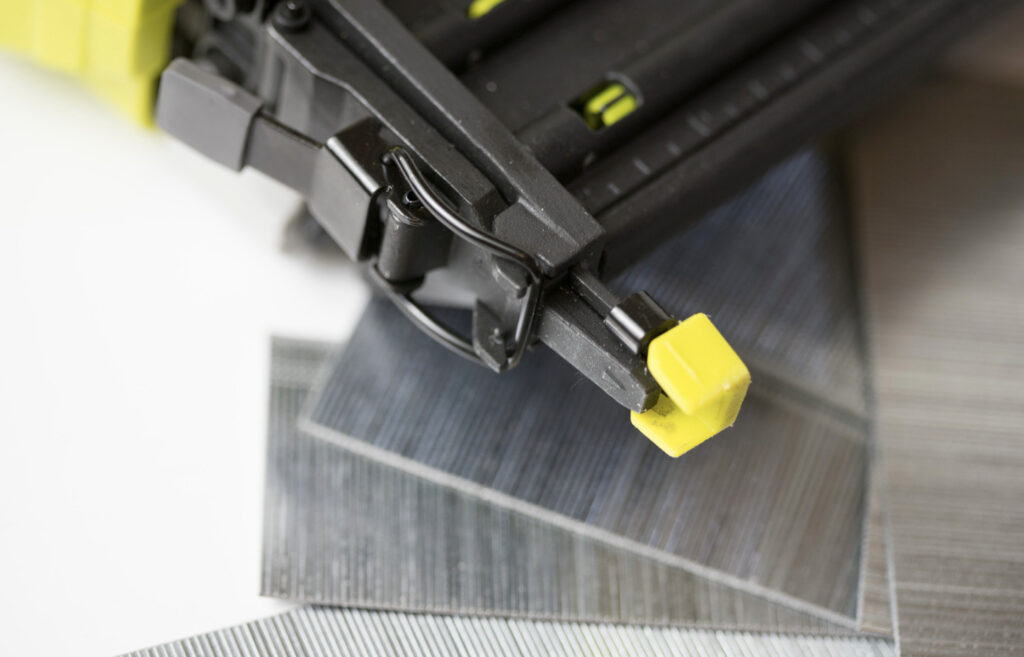
Best Cordless Brad Nailers
So what is the best cordless brad nailer? Well, that depends on your definition of “best”. Some of the top-rated brad nailer brands on the market include DeWalt, Hitachi, Bostitch, and Porter-Cable.
My first brad nailer was a cheap battery-powered, off-brand one from Amazon. I definitely regretted that purchase.
Then I upgraded to my Ryobi Airstrike Brad Nailer, and I LOVE it. It is affordable but also has worked really well. I’ve used it on dozens of projects and it hasn’t slowed down.
While shopping for a brad nailer, be aware if the tool you are wanting includes a battery. This can significantly increase the cost of the tool.
Additionally, you want to be aware if the brad nailer is pneumatic or battery-powered. Pneumatic requires the purchase of an air compressor, an additional cost to keep in mind.
If you aren’t interested in the Ryobi Brad Nailer, here are a few other options that won’t fail you!
What is a Finish Nailer?
A finish nailer is a type of power tool that is used to drive slightly thicker finishing nails (also known as brads) into wood or other materials. These nails are typically between 15 and 16 gauge.
It is designed to shoot larger nails with a wider head that provides a stronger grip and a more secure hold than brad nails.
A finish nailer is often used for attaching materials that require more significant holding power, such as baseboards, door and window casings, crown moldings, and chair rails.
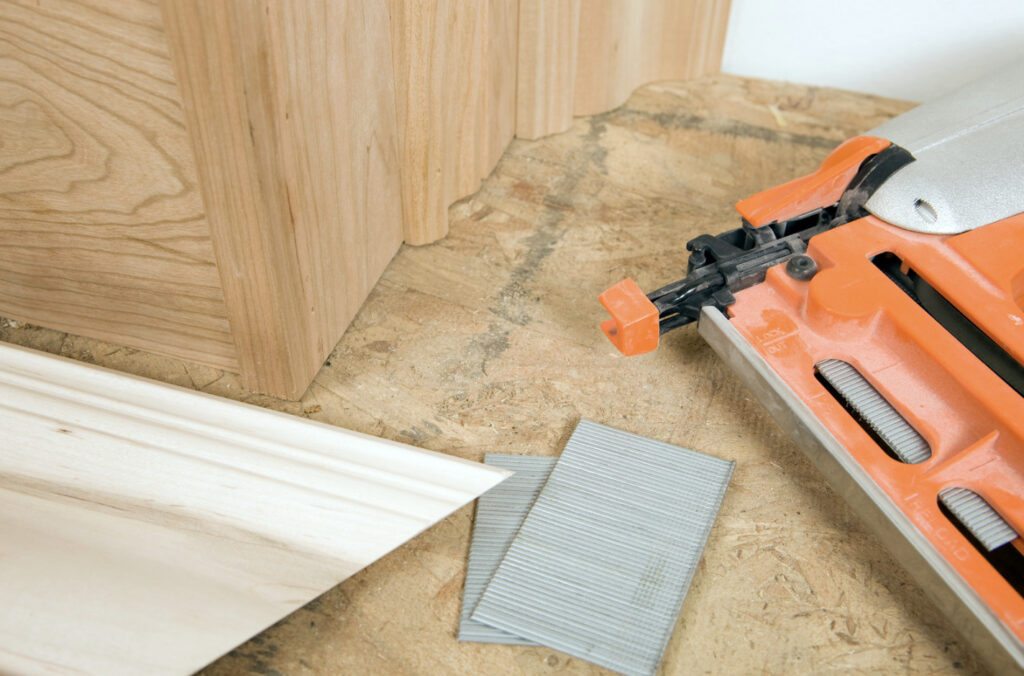
What is a Finish Nailer Used For?
Here are some common uses of a finish nailer:
- Installing baseboards and crown moldings: Finish nailers are ideal for attaching baseboards and crown moldings, which require a stronger hold than brad nails.
- Hanging doors and windows: Finish nailers can be used to attach door and window casings to the wall and to secure the door and window frames.
- Attaching trim: Finish nailers are perfect for attaching decorative trim like chair rails and picture moldings to walls.
- Constructing cabinets and furniture: Finish nailers can be used to assemble cabinets, drawers, and furniture frames.
- Other woodworking projects: Finish nailers can be used in a variety of woodworking projects that require a stronger and more secure hold.
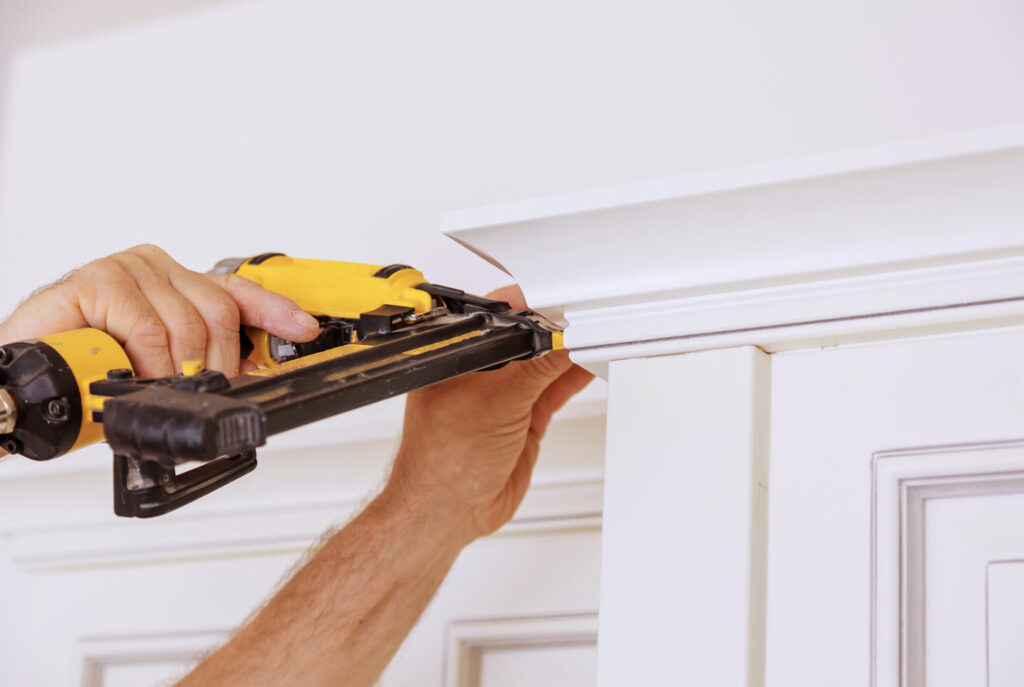
Framing Nailer vs Finish Nailer
Framing nailers and finish nailers are two different types of nail guns that are used for different purposes. Here are some of the main differences between the two:
- Nail size and gauge: Framing nailers use larger and thicker nails than finish nailers. The nails used in framing nailers are typically between 2 and 3-1/2 inches long and have a gauge of 12 or 16, while finish nailers use shorter and thinner nails with a gauge of 15 or 16.
- Material thickness: Framing nailers are designed to fasten thicker and heavier materials such as lumber, beams, and structural components, while finish nailers are used for attaching lighter and thinner materials such as trim, molding, and paneling.
- Holding strength: Because framing nailers use larger and thicker nails, they provide a stronger and more secure hold than finish nailers. This is important for construction and framing projects where the materials need to be firmly attached to support the weight of the structure.
- Nail placement: Finish nailers are designed to leave a smaller hole, which can be filled and sanded for a smooth finish. Framing nailers, on the other hand, may leave a larger hole that is not as easily concealed.
- Power requirements: Framing nailers require more power than finish nailers, which means they typically use air compressors or gas-powered engines to operate, while finish nailers can be powered by batteries or air compressors.
In summary, framing nailers are used for heavier and thicker materials in construction and framing projects, while finish nailers are used for lighter and thinner materials in finishing work. The nails used in each type of nailer are different in size, gauge, and holding strength, making them suitable for specific applications.
Best Finish Nailer
There are many different finish nailers available on the market, and the “best” one for you will depend on your specific needs and preferences. Some of the top-rated finish nailer brands on the market include DeWalt, Hitachi, Bostitch, and Makita.
Here are a few highly rated finish nailers:
CRAFTSMAN V20 Cordless Finish Nailer
RYOBI ONE+ 18V Cordless AirStrike Finish Nailer
Makita 18V Straight Finish Nailer
So, brad nailer vs finish nailer? Which do you use? It all depends on what you’re working on. If you’re doing something that requires precision and a delicate touch, go with the Brad Nailer. But if you’re working on larger projects or anything that requires a bit more oomph, the Finish Nailer is the way to go.
Happy DIY-ing!
Want to save or share this post on the brad nailer vs finish nailer? Pin it on Pinterest!
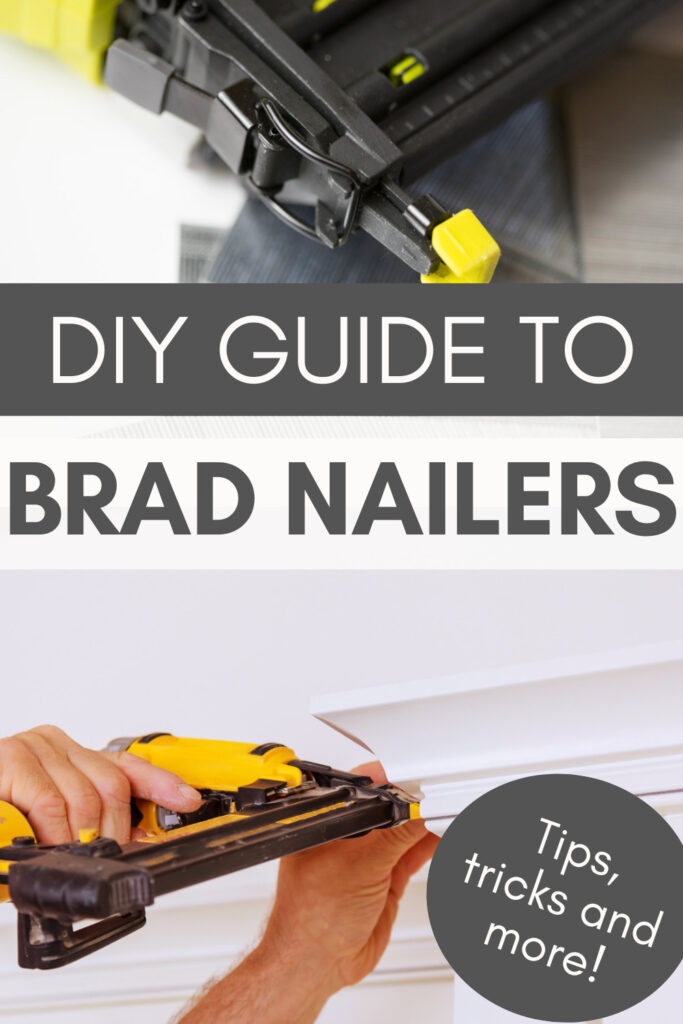
Looking for some project inspiration to put your brad nailer to use? Here are a few projects I used my brad nailer for:
- How to Easily Install Picture Frame Moulding
- 10 East Steps to Make Your Own Floating Shelves for Less Than $20
- Simple Steps to Build Your Own Fast Sling Puck Board – With Bonus Game Rules Printable
- DIY Garden Toy For 1-Year-Old: Fun and Easy to Build
- The Ultimate Guide to Flipping Dressers for Profit



